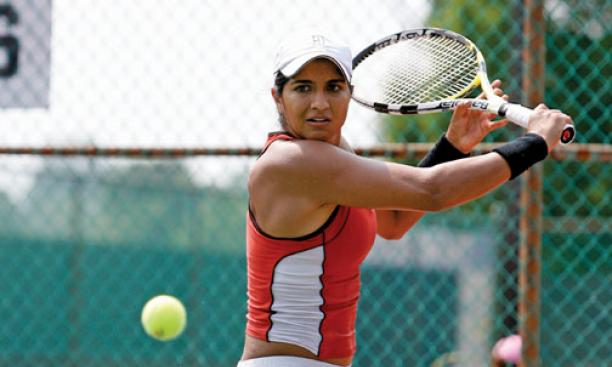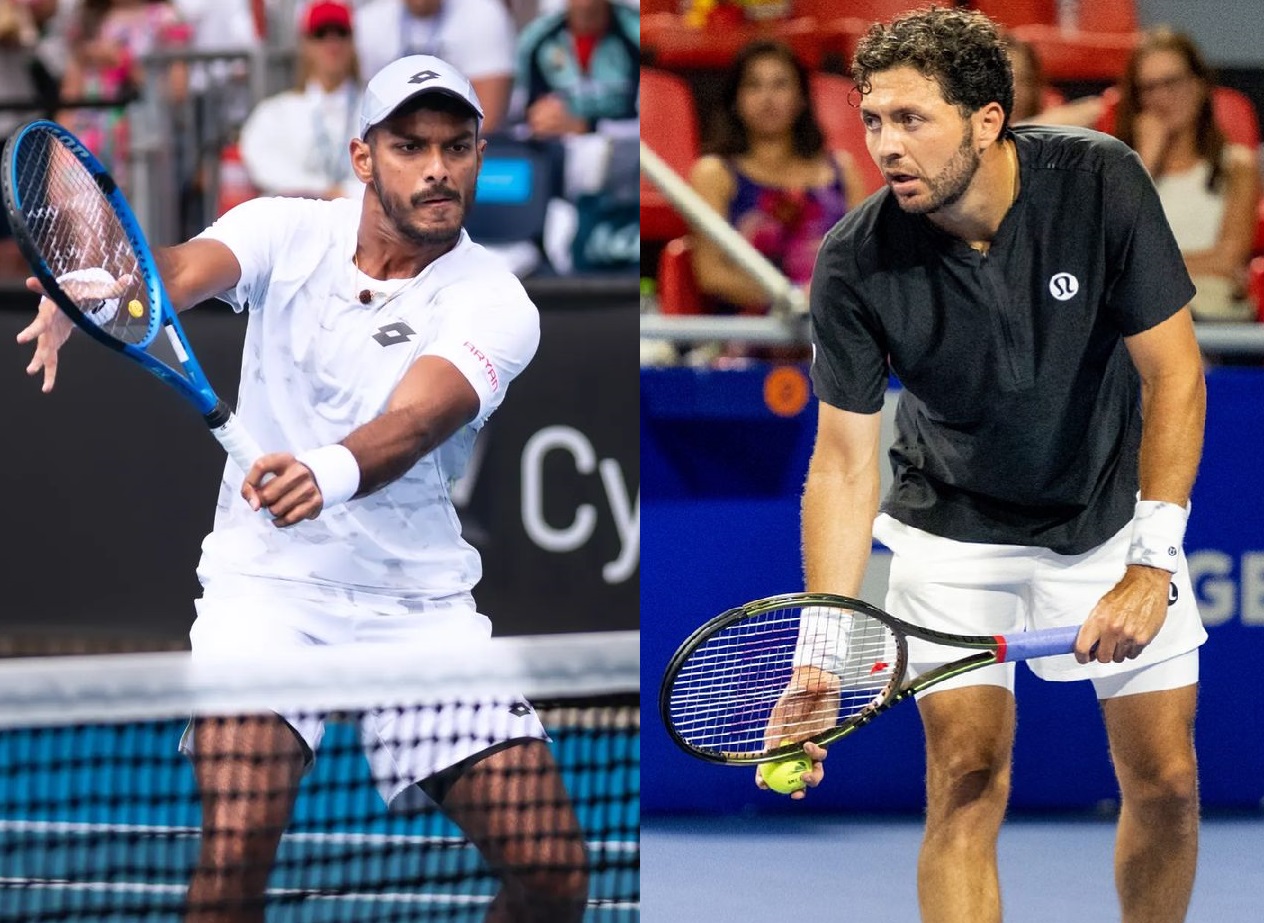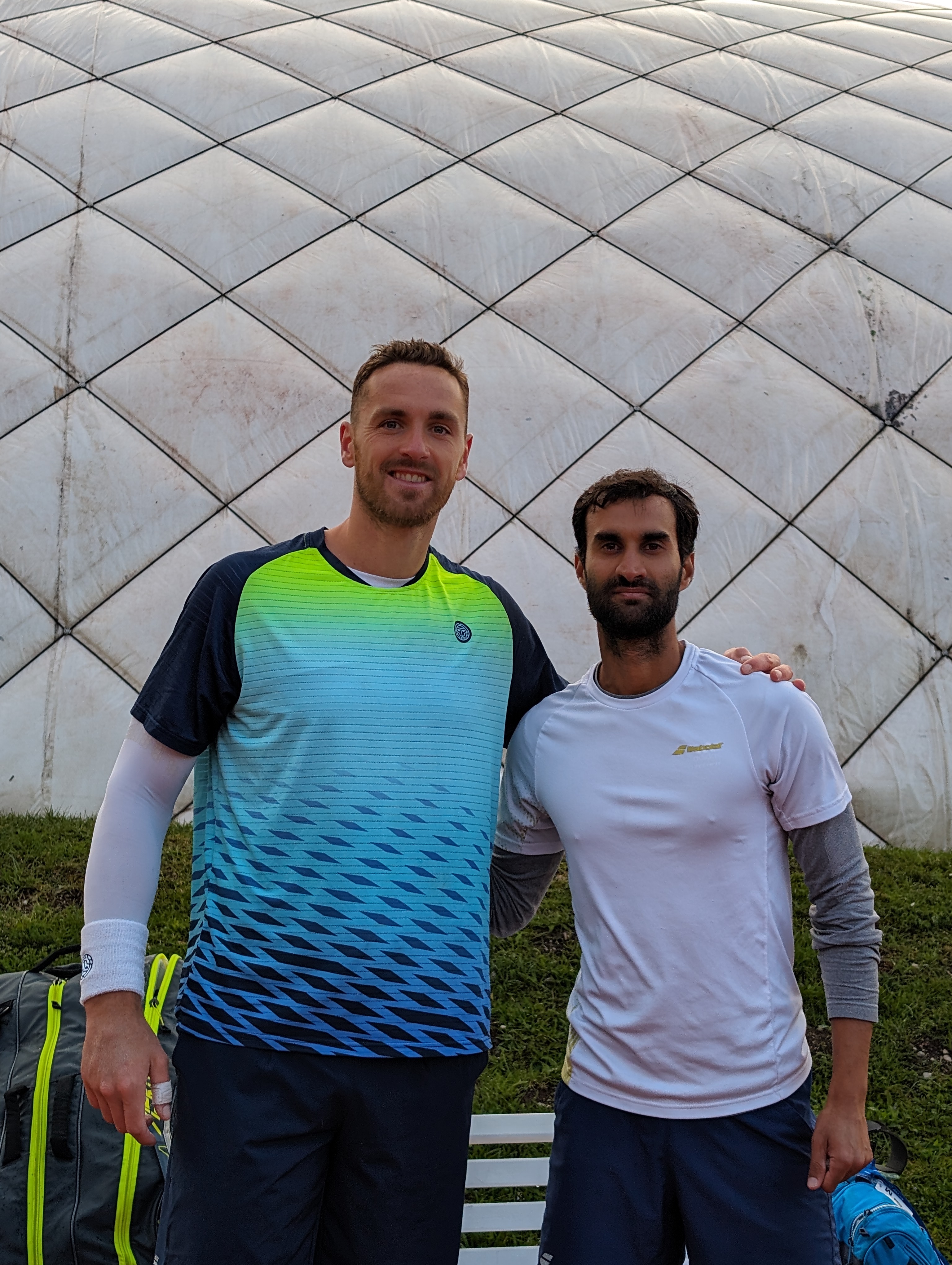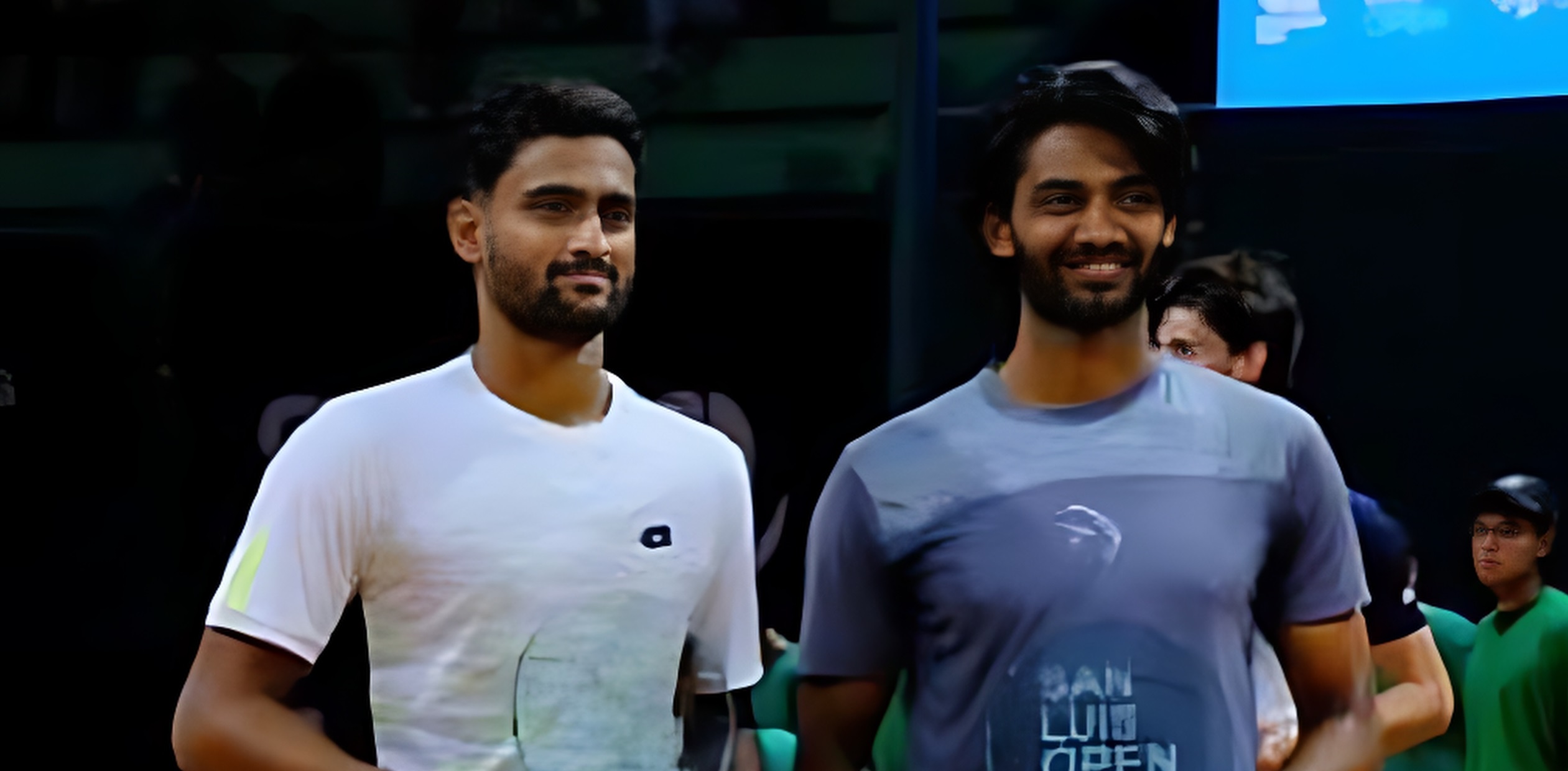Interview by Gautam Belday – December 21, 2018
As part of the ITD interview series, we had the pleasure of catching up with Neha Uberoi over coffee on Upper East-side in Manhattan, NY. Neha is a former Indian American professional tennis player and along with her elder sister Shikha Uberoi competed on the gruelling WTA tour. Neha touches upon many areas in this interview – her childhood, her life in college, her training, her life on tour, post-retirement and finally motherhood.
As a pro, she achieved a Top-200 WTA Tour singles ranking, as well as a career-high doubles ranking of No. 107, reached two WTA doubles finals and competed in the US Open. Some of Neha’s achievements before turning pro include winning Ivy League Rookie of the Year honours as a 16-year-old freshman in 2003, an All-American in singles and doubles the same year, and reaching the finals of Girls 18s Orange Bowl.
Neha worked as a digital marketing consultant for four years in a variety of industries, including start-ups, e-commerce, beauty, education and B2B tech services. She is also the co-founder of South Asians in Sports (sainsports.com), a network of South Asian professionals who work in the sports industry. A South Asian-American role model, she advocates for sports participation, mental health and wellness through direct practice, coaching, research, public speaking and digital media.
Most recently, Neha has been nominated (along with Liezel Huber and Sam Warburg) to serve as an Elite Athlete on the USTA Board of Directors. The new Board has been elected to a two-year term that begins Jan. 1, 2019.
Neha has a new challenge in life now. She is a mother to a six-month-old baby girl Sahiba, and we wish her the best!
The interview is the first of three parts
What made you choose the sport?
I am one of five girls in my family. My father, a huge tennis fan, came here to this country. He went to the US Open 14 years in a row, never missing a day-that’s how enthusiastic he is about Tennis.
He wanted his kids to enjoy the sport and play it and see how far they can go in the game. So, I was introduced to tennis by my father, and I just happened to be decently talented from a young age. So, as a family, we got stuck to the sport.
My sister Shikha and I, initially, showed a lot of interest. So it was kind of like a family interest and, really, more of a challenge for my dad to see if he could make something out of his girls, being a first generation immigrant here in America.
It was a family requirement.
How was that initial journey, and your experience playing alongside your sisters?
I was lucky in that I had two older sisters who could make a lot of mistakes that I could watch and learn from. I could see what they were doing right or wrong, and I didn’t have to go through a lot of the mistakes myself.
And I think that I also had the benefit of having the people that I needed to get better continually supporting me. I was always striving to do better because I had someone I wanted to beat or someone to play or being on the court with. So I had this kind of situation where as a young kid, I wanted to do everything my older siblings wanted to do, and it was tennis.
And it was a lot of fun for me to be able to play. We have videos of everything- even swimming, competitions with my dad where I would come dead last, and I would ask if I won
When I was 9, my sister Shikha and I moved to a Tennis Academy in Florida. I was very young, and I was in the USTA Middle States here, and I played a few junior tournaments. Then we moved to a battleground for junior tennis.
It was a cut-throat environment with everyone trying to be the next superstar, and it was a bit of a shock for us. The initial reaction, I remember, was something like “wow, this is so competitive.”
We were put on the last courts with the worst players, and it was an adjustment from being pretty good up until then to that. We understood that now we are in the system and we have to be equally competitive.
I learned how to be a fighter from a very young age. And having my sister Shikha with me through it was a blessing because otherwise, it was very lonely. Having her support and her being older to me was a big advantage.
Neha Uberoi and Shikha Uberoi with the Williams sisters
Did you play any other sports as a child?
Yes, we played a lot of sports. My parents had access to a lot of facilities being in the Princeton area. I remember doing Ballet, Karate, Jujutsu, Martial Arts, Horseback riding. We were major swimmers, and I think swimming, mainly, was beneficial to my fitness which was always a disadvantage- being South Asian. We mature a lot later than our American counterparts, and with such a rigorous training schedule, swimming gave me that armour to protect myself against so many joint injuries on my wrist, ankles etc. that I see so many tennis players go through.
Swimming builds up our bodies naturally without much impact. I also played soccer for a long time as well. But by the time I was 9, I was exclusively into tennis. I wouldn’t recommend that, though. I would probably recommend playing other sports until about the age of 12-13. You want to make the kid an athlete. The rate of injury and burnout is so high is they focus on one sport. Tennis is so rife with wrist injuries and things like that.
Where and who do you start training with? Academy, personal coaches etc.
I was at Saddlebrook Tennis academy till I was 12. I started when I was 9 and continued playing 5 hours a day, six days a week. I had a suitable arrangement with my school where I would leave at 1 and play till 6.
Five hours a day of tennis and, slowly, it increased my fitness levels. Once I was 12, we moved to a private coach in Florida. We didn’t play a lot of junior tournaments. We were really into improving our game and sometimes when you play a lot of junior championships; there is a pressure to win instead of focusing on developing weapons, developing your game and having a real game to look at when you are 18 instead of when you are 14.
And so, my father wanted us to develop our game. So, we competed, but I don’t think we had great results in the juniors. We hardly played. I remember I got to a couple of finals of US national tournaments. To me, honestly, they don’t mean anything when you are a junior.
That development to me was significant. Being an Indian, being South Asian and being so much into academics, I went to Princeton when I was 16. I did my Freshman year there, and then I turned pro. And, when I left Princeton, I was still a junior. I got a couple of wildcards. I got one wild card into the Orange Bowl, and I got to the finals of that.
So that was my junior career. I was playing sporadically, mostly training, not doing that well in junior tournaments, losing to a lot of pushers, losing to players who don’t play anymore. I was working on my game, missing shots- doing whatever I could to learn. I started playing ITF tournaments when I hit about 16-17 years.
Neha with Shikha Uberoi
How was your experience at Princeton? Do you still keep in touch with your teammates and coaches?
I played for one year, that was my freshman year, and our coach was Louis Gangler. I had known her since I was a kid because we live in the Princeton area. Playing for her was great. She was such a lovely coach. I think college, academically speaking, was extremely challenging for me. Being very young and having come from a background that focused more on athletic and then going to place like Princeton where smart people surround you your level is not the same and the fact that I was two years younger than most of my college mates were. I was 16, and they usually are 18 or 19. So for me trying to keep my tennis up at the level of a free professional or professional as well as you know trying to do well academically was very difficult for me at 16 years of age. There was a lot of pressure that and I didn’t enjoy my first year at Princeton. Playing for the team was great. I did very well. I was Ivy League rookie of the year. I was undefeated, and that was great. But you know my teammates were not trying to go Pro. They weren’t trying to push themselves to do better. So that was disappointing for me not to have a team that wanted to improve really and train. So, I had to find extra hours before practice, after practice, and there was a lot of hassle. I enjoyed the team aspects of it but mind frame at that time wasn’t like “I am here to play college tennis”. It was like, “let me get through this year, and I can go on to the pro tour.” The focus was off and writing 15-page reports and being so challenged academically and in such an intensely challenging academic environment. I mean these kids were all valedictorians, salutatorians, top of their class. I came, and I was a top student, and I was a good student but Princeton is just another level, and I think I was very young for that experience.
Neha Uberoi at the Princeton University
Where you and Shikha at Princeton at the same time?
No, she was two years earlier. She was older, and I would say she was more of a nerd than I am. She had a 4.0 GPA in her freshman year, and she studied like 4 in the morning every day. She is a nerd. I think I am pretty diligent and smart, but she is another level. She read every single assigned reading. I mean we still graduated, but I think she had more of a passion that I do.
USTA has been placing a lot of emphasis on going the college route. For most of the junior players, going to college is the right thing to do. What are your thoughts on players (such as Fritz and Cici Bellis) skipping college and going straight to the pro tour?
Yes. My thoughts have changed. I think ten years ago when I was playing; the mentality was that you go to college and you lose your game. You become the worst player, and there’s no chance for you. If you go to college, you end your chance to go pro. But I think the mentality has shifted as we’ve seen and I am talking from women’s tennis and also men’s tennis. Men develop a lot later physically, and they fill out and mature a little bit more then. So a 24-25-year-old guy is very different than a 21-year-old guy regarding physicality. So I think you have that time where you have you have four years and women tend to peak a little early, so they lose out on that right when they are developing their game, and they go to college. But I have to say that I have seen that it is changing and my mentality on that has changed. Going to college everyone said oh you going to ruin it, you are going to be behind on tour and I did feel that. My cohort was already on tour, already getting ranking and I felt like I have to catch up. But now I don’t think that college is always a good idea unless you are 16 years old, in the top 300, coming to the quarterfinals of every tournament, you have consistent results, and you are doing well, then don’t go to college, otherwise, go to college.
You don’t have to go all four years but you can go two years but I think that college gives you the maturity level that you need for the tour, it gives you the security blanket that if you don’t make it on tour, not meny do.
At least you have something to fall back on when you are done, and even if you do make it, tennis ends at the age of 31, 32. The average you know 30. I know you’ve heard people playing until 35 and 38, but that’s an anomaly. That’s not regular. So you need something when you are done. You see what happens when people don’t have a college degree. There’s a whole study on that. So I say always college unless there is some insane trajectory which puts you in WTA by the time you are 16 17.
Or you’ve made your millions, which people have.
You started on the ITF Pro Tour as a 14-yr old, and you always played way more tournaments on the pro tour than junior tournaments. This meant going through qualifying matches for about 2-3 yrs. What was the thought process behind this approach?
Oh yeah. Between the ages of 14 and 18, I was still improving. I was so little when I was 14. I was probably what an average 11-year old would look like. We were working on our bodies so hard. We were in the gym, playing matches and went to the gym. We had to build our bodies to compete at that level. For us, it took us from age 12 to 18 to get that body. You have seen my photos. I was pretty skinny. If you see my pic with Venus and Serena, that point comes across, and I was 13 in that picture. So, building our bodies, our game, weapons, serve was 90mph at 14, and it got to 125mph by that time. We weren’t in the junior tournaments; we were in the pro circuit. I wasn’t a real player until I was 18 or 19.
On the Junior Circuit, you had your first big run in the Orange Bowl in 2003 as a 17-yr old, reaching the finals beating the likes of Krajicek (Jr No.1), Latisha Chan (Jr No.2) before losing to Vaidisova in a 3-setter. What brought about this inspired run?
I remember that match. I had just came from college. I was excited to be starting on the tour. I didn’t like my first year of college. I felt like I belong on tour. I got this random opportunity from USTA who didn’t pay attention to me until then. Sure, I’ll give her a wild card. I had nothing to lose. I came from nowhere. I had no idea who Michela Kraijchek was, #1 #2 in the world. These are #1 and #2 in the world. I had no idea. I just came there — my coach Rick Macci at that time. He was a great motivator. He said I was going there to win a bowl of oranges. I said yeah, I want to play. I heard the finals were played in a bigger stadium. They ended up not putting us in the big stadium. I was a bit disappointed. I had nothing to lose. That’s it. Everyone kept me wishing good luck and congratulated me for beating the #1 player which was a big deal. Coming from college tennis environment, and I had no expectations. My game was developed, I was bigger and stronger. Unfortunately, I lost against Vaidisova.
I know who the umpire was, some bad calls. I came back and beat her a few months later. So, it was just lack of expectations. It happened to Sloane Stevens. It happens sometimes.
Did you train with Rick? That was after Saddlebrook?
I had a coach before that. It was Renzo Reyes. He’s the one who made us strong. After my freshman year at Princeton, I went to work with Rick Macci. He’s a fantastic motivator. He took me to a certain point. My dad was always the guiding force. We went and saw specialists. We went to see Robert Landsorp, who is an excellent coach. And maybe a few others.
I had another coach when I was about 18/19 who was also strategically a genius. He made me see the game in a way that I never saw before. I was a dumb player before meeting him. I had no idea about a lot of things. It is he who introduced me to percentage tennis, what does that mean. What do you need to do, to win? I only knew to hit the ball as hard as you can. I was a very aggressive player. He taught me what my game is and what isn’t. What are my weaknesses and my strategy. That’s when I had some of my biggest wins, and I was beginning to do better on tour.
You continued this fantastic run to win the Luxilon Cup (winner gets WC to Nasdaq 100 MD next year) defeating the likes of Sesil Karantanchea, Vaidisova, Jamea Jackson.
I just wanted to beat Vaidisova again. I tried to beat her. It hurts when you lose. Yeah, we were doing well. I was having a lot of fun. It was stressful, but I was able to play freely. I was a year out of college. I wasn’t expecting anything.
You played both the US Open and the Wimbledon Championships. Any special memories from the 4 Grand Slam events (3 US Open, 1 Wimbledon) that you played as a Jr. Also, did you prepare differently for the GS events?
No, junior events. No. You prepare for any tournament by having a training schedule. So you are fresh. And that you are at an optimal fresh level. But mentally, it is an intimidating environment when you get there. There is so much excitement in the air. Every junior player wants to do well. You are in NYC; you are in a Grand Slam. You make it a mountain out of a molehill of a tournament. It’s just another tournament. The stage is bigger maybe. It’s just tennis, and you hit the ball across the net. Probably been 15 years but I built it up in my head. It’s unavoidable especially as a young person. But looking back it’s just another tournament. I don’t have any tournament memories honestly.






Leave a Reply to Indian-American Neha Uberoi: On the joys and sorrows of life on the Pro Tour – A journey which Neha quit at age 22 (Part 2 of 3) – Indian Tennis DailyCancel reply